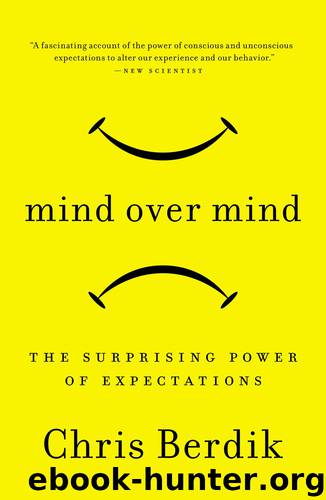Mind over Mind by Chris Berdik

Author:Chris Berdik [Berdik, Chris]
Language: eng
Format: epub
Publisher: Penguin Publishing Group
Published: 2012-10-10T16:00:00+00:00
BE ALL THEY THINK YOU CAN BE
Eyewitness misidentifications are the central ingredient in an alchemy that can turn innocent people into convicted criminals. The beliefs and behaviors of the accused matter little in this process. The wrongfully convicted feel and act no more guilty after sentencing than they did before being wrongfully accused. In other cases, however, it’s precisely our responses to the expectations of others that give their assumptions the ring of truth.
In 1890, the United States Census Bureau introduced a new gadget called the Hollerith Tabulating Machine that coded demographic data sheets into punch cards. The cards made number crunching a lot easier, but the machine itself was an intimidating behemoth. Its inventor, Herman Hollerith, estimated that a trained operator could process about 550 cards per day. That benchmark was passed on to the Census Bureau workers. They were performing at about that level within two weeks. Some managed to go a little faster, but the effort exhausted them.
Then a new group of workers were trained on the machine with no mention of the 550-card expectation. These folks were soon punching out more than two thousand cards a day without breaking a sweat. Performance doesn’t just follow expectations wherever they lead, however. Some people are more likely to respond to certain expectations in particular circumstances. The complexity of this relationship is nowhere more evident than the research into teacher expectations, which began with Rosenthal’s Pygmalion in the Classroom (1968) a book-length treatment of his two-year study at a South San Francisco elementary school.
The school’s principal, Lenore Jacobson, was Rosenthal’s coauthor and helped him put one over on the teachers. In the spring of 1964, all the students at Jacobson’s school took an IQ test that she and Rosenthal dressed up as the “Harvard Test of Inflected Acquisition,” which could supposedly identify students who were about to bloom academically.
Regardless of how they scored, some students were randomly deemed likely to bloom. At the beginning of the next school year the names of the bloomers were quietly passed on to their new teachers. Over the next two years, Rosenthal and Jacobson compared the bloomers to the rest of the students. The results, dubbed the Pygmalion Effect, are often summed up as follows: the kids who were expected to bloom, did.
That’s an oversimplification of what actually happened. Across the entire school, expectations boosted reading grades and IQ scores of the bloomers in a modest, but statistically significant way. At year’s end, teachers also rated bloomers as happier, more curious, more interesting, and more likely to succeed in the future. Behind the averages, however, things got messy.
In year one, first and second grade bloomers made impressive gains in IQ scores and reading. There were no big IQ advantages for bloomers in other grades, however. Meanwhile, boy bloomers made most of the gains in verbal scores compared to their peers, while the bloomers’ reasoning advantages existed mostly among the girls. These results and the similarly mixed findings of replications have fueled decades of debate.
Download
This site does not store any files on its server. We only index and link to content provided by other sites. Please contact the content providers to delete copyright contents if any and email us, we'll remove relevant links or contents immediately.
The Art of Thinking Clearly by Rolf Dobelli(10136)
Mindhunter: Inside the FBI's Elite Serial Crime Unit by John E. Douglas & Mark Olshaker(9099)
Change Your Questions, Change Your Life by Marilee Adams(7559)
Nudge - Improving Decisions about Health, Wealth, and Happiness by Thaler Sunstein(7456)
Mastermind: How to Think Like Sherlock Holmes by Maria Konnikova(7156)
The Power of Now: A Guide to Spiritual Enlightenment by Eckhart Tolle(5531)
Men In Love by Nancy Friday(5109)
Altered Sensations by David Pantalony(5001)
Factfulness: Ten Reasons We're Wrong About the World – and Why Things Are Better Than You Think by Hans Rosling(4621)
The Confidence Code by Katty Kay(4154)
Thinking in Bets by Annie Duke(4117)
Man and His Symbols by Carl Gustav Jung(4005)
The Worm at the Core by Sheldon Solomon(3394)
Why Buddhism is True by Robert Wright(3370)
Three Women by Lisa Taddeo(3319)
Liar's Poker by Michael Lewis(3316)
The Inner Life of Animals by Peter Wohlleben(3194)
Descartes' Error by Antonio Damasio(3185)
The Power of Mindful Learning by Ellen J. Langer(3129)
